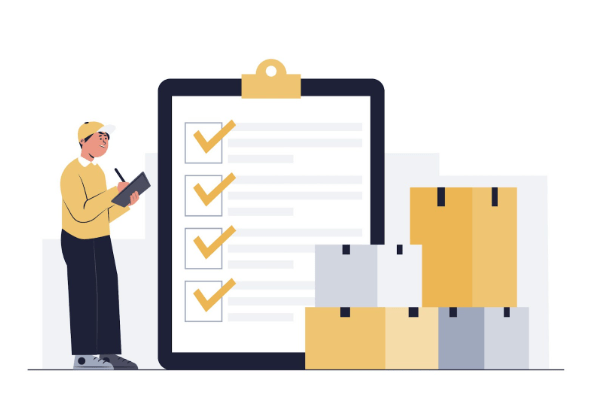Category management stands as a bedrock of a robust procurement strategy, offering organizations a pathway to optimize their purchasing endeavors and unlock substantial cost savings. In that regard, it serves as the compass that guides procurement professionals towards streamlined operations, fortified supplier relationships, and the creation of enduring value for their respective organizations.

In the subsequent sections, we will embark on a comprehensive journey through the critical tenets that constitute the very essence of successful category management in procurement. When woven together, these principles form a tapestry of strategies and practices that have repeatedly proven to be instrumental in achieving procurement excellence. From understanding the intricacies of the markets to data-driven decision-making and strategic supplier partnerships to compliance and governance, each facet of category management plays a pivotal role in pursuing procurement optimization.
But before we get to the golden rules of category management, let’s first see what category management means in terms of procurement and why each procurement manager needs to abide by these so-called rules in order for their company to thrive truly.
What is Category Management in Procurement and How It Works?
To begin, it’s evident that category management (CM) within procurement is undergoing a transformation. Initially centered on sourcing goods and services through project-based approaches, its scope rapidly evolves. Regardless, we can broadly define CM as a collaborative methodology that groups together similar external expenditures of a given company.
This classification facilitates identifying opportunities for enhancing business practices, whether through implementing consolidation strategies or conducting thorough market assessments to strengthen negotiation positions and contract terms.
The CM process typically involves delineating organizational requirements, pinpointing optimal suppliers, negotiating agreements, and overseeing vendor relationships. Additionally, it encompasses the structuring of procurement resources in various dimensions:
- Analysis and oversight of expenditure;
- Refinement of processes and performance;
- In-depth market intelligence;
- Anticipating and managing risks;
- Formulating sustainable practices;
- Generating comprehensive corporate reports.
In the realm of procurement category management, the role of a supervisor vs manager holds paramount significance. While a supervisor primarily focuses on day-to-day operations and ensuring tasks are executed efficiently, a manager takes a broader strategic view, aligning category management with the overall procurement strategy and organizational goals. Striking the right balance between these roles is instrumental in driving effective category management outcomes.

So, now that you have a better understanding of what category management in procurement is and the people responsible for the process, it’s time to explore the golden rules of this strategic imperative that each modern-day organization that utilizes procurement as a strategic process to acquire goods and services should implement in their operations.
The Golden Rules of Category Management in Procurement
Deep Market Understanding: The Foundation of Success
First things first, a profound comprehension of the markets in which an organization operates is the bedrock of success in category management. Procurement professionals must engage in exhaustive market research, evaluating not only opportunities but also potential risks within the supply chain. Staying attuned to industry trends is equally crucial, as it provides invaluable insights into shifts and developments that may impact procurement dynamics.
This deep-seated understanding serves as the compass for informed decision-making. It empowers procurement experts to make choices rooted in a comprehensive grasp of market intricacies, ensuring strategies are meticulously aligned with the broader organizational goals. In essence, this knowledge forms a solid foundation upon which procurement endeavors are built.
Moreover, this insight is a proactive measure against potential disruptions or unforeseen challenges. By preemptively recognizing supply chain vulnerabilities and market fluctuations, procurement professionals are better equipped to respond effectively, thus safeguarding the organization’s interests. In that context, a nuanced comprehension of the market landscape is not just an asset but a prerequisite for procurement excellence.
Data-Driven Decision Making: Harnessing the Power of Information
In the procurement sphere, data’s significance cannot and should not be overstated. As a matter of fact, data serves as the lifeblood of informed decision-making and operational effectiveness. Procurement teams are encouraged to harness the potential of advanced analytics and resilient procurement software. Through these tools, they can meticulously accumulate, scrutinize, and decipher an array of critical data points. This encompasses an in-depth assessment of supplier performance, an evaluation of prevailing market conditions, and an analysis of spending trends.

This commitment to a data-driven approach fundamentally empowers procurement professionals. Armed with comprehensive insights from robust data analysis, they are poised to navigate procurement challenges quickly and precisely. It facilitates making decisions rooted in empirical evidence, enhancing the likelihood of favorable outcomes. Moreover, this approach fortifies negotiation efforts, enabling procurement teams to engage with suppliers from a position of knowledge and strength.
Beyond immediate decision-making, a data-driven approach lays the foundation for long-term procurement success. It unveils opportunities for cost optimization and process refinement, ultimately enhancing efficiency and cost-effectiveness. In essence, the strategic utilization of data is pivotal in driving procurement excellence, ensuring that the power of information underpins every decision.
Supplier Relationship Management: Cultivating Strategic Partnerships
Next in line, fostering strong supplier relationships lies at the heart of proficient category management. Procurement professionals are recommended to prioritize collaboration, clarity, and the joint creation of value. This entails keeping open lines of communication, conducting periodic performance reviews, and aligning strategies with vital suppliers.
The cultivation of such strategic partnerships yields significant benefits. It not only improves the overall performance of suppliers but also opens the innovation potential. Organizations can tap into their expertise by working closely with suppliers, driving constant improvement, and promoting a culture of mutual growth.
Moreover, a footing of trust and transparency paves the path for smoother transactions and a more seamless supply chain, eventually contributing to the success of category management endeavors.

Strategic Sourcing: Balancing Cost and Value
Strategic sourcing is a systematic approach that thoroughly evaluates suppliers, intending to pinpoint those that present the optimum blend of cost-effectiveness, quality, and service excellence. Procurement teams employ advanced techniques like Total Cost of Ownership (TCO) analysis and supplier scorecards to assess supplier propositions comprehensively.
By adopting such comprehensive methodologies, procurement decisions become finely attuned to the organization’s overarching objectives. This strategic alignment ensures that procurement activities manage costs efficiently and drive value across the spectrum.
Striking this balance between cost and value is instrumental in achieving procurement excellence, where organizations procure goods and services not merely at the lowest cost but with an unwavering commitment to quality and service standards that resonate with their strategic vision.
Risk Management and Mitigation: Preparing for the Unexpected
Category management’s range transcends sheer cost savings; it confines the critical risk management domain. For that reason, procurement experts are entrusted with proactively identifying and assessing potential risks within the supply chain. These risks span an expansive spectrum, from geopolitical challenges to the possibility of supplier insolvency.
In response, procurement professionals should develop contingency programs, effectively preparing for unexpected circumstances. Additionally, diversifying the supplier base is a vital strategy in mitigating risks. By spreading procurement efforts across multiple trustworthy suppliers, organizations strengthen their resilience against potential disturbances, ensuring uninterrupted processes despite unexpected challenges.
This proactive approach to risk management safeguards business operations’ continuity and emphasizes the strategic foresight and preparedness that define effective category management practices.

Compliance and Governance: Upholding Ethical Standards
Adherence to legal and ethical standards is an uncompromising principle in the procurement realm. Procurement teams are assigned to deftly maneuver through a multifaceted landscape of laws, certifications, and industry-specific norms.
This dedication to compliance grows beyond risk mitigation; it acts as a bulwark, safeguarding the organization from legal and reputational risks. Moreover, it produces a culture of clarity, trust, and integrity with stakeholders.
Procurement ensures operational integrity and lays the groundwork for lasting relationships built on mutual respect and ethical conduct by keeping these ethical standards.
Performance Measurement and Continuous Improvement: The Path to Excellence
Lastly, estimating the effectiveness of category management strategies is imperative for procurement excellence. This necessitates frequent performance reviews underpinned by well-defined key performance indicators (KPIs). These KPIs enclose vital metrics, including cost savings, supplier performance, and process efficiency.
Such a data-driven procedure empowers procurement units to distinguish areas warranting improvement and implement targeted corrective measures. This iterative process forces continuous enhancement, ensuring procurement practices stay agile and aligned with corporate objectives.
Through systematic performance measurement, organizations gain valuable insights into the influence of their category management initiatives. It not only validates successful strategies but also reveals opportunities for optimization.
By adopting this cycle of evaluation and improvement, procurement groups generate a trajectory toward operational excellence. This dedication to refinement represents a culture of adaptability and pursuit of excellence, hallmarking the approach of forward-thinking procurement professionals.
Final Thoughts
Sticking to the golden rules of category management in procurement empowers companies to attain greater efficiency, reduce costs, and mitigate risks. By prioritizing market understanding, data-driven decision-making, and strategic supplier relationships, procurement experts can drive endurable value for their organizations. In that regard, with a strong commitment to compliance, performance measurement, and continuous improvement, organizations can confidently navigate the intricacies of procurement and attain lasting success.



